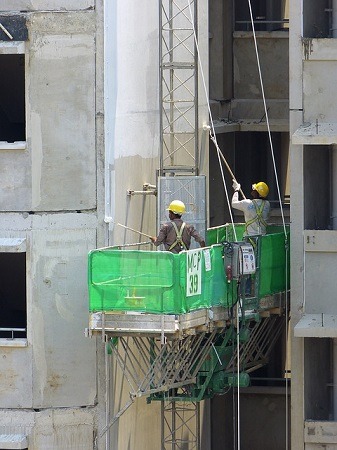Painting the exterior of a building can present a wide range of problems. It is not uncommon to see a newly painted building looking like it needs a fresh coat of paint. The main reason why painted buildings look unattractive is due to wrong painting techniques and the use of the wrong paint. If you are trying to paint your home and are experiencing different issues, the good news is that most of the problems can be fixed. Following are some of the common problems to look out for.
1. Dirt buildup on the surface
One common challenge when painting exterior surfaces is accumulated dirt. Dust and different dirt particles can begin to build up on the painted surfaces and this leaves the surface looking like it has mold. This problem is more common when inferior-quality paints are used such as variants of satin or semi-gloss paint. While it may not be possible to avoid this problem completely due to the pollution in the air, using high quality acrylic paints will help.
2. A chalky residue
If you lean on a wall and come away with a chalky residue all over your clothes, this is a sign of the paint wearing away and leaving behind a fine powder. While some amount of chalking is common, if the chalking is extreme it could be due to the use of inferior quality paint that is highly pigmented. This also occurs if you use interior paint on the exterior surfaces. You can solve this problem by washing off the chalky residue before applying a fresh coat of high quality exterior paint.
3. Paint flaking or peel off
Flaking or peeling paint can occur especially if a new coat of paint is applied over an old one or where two coats of paint are used. When this occurs and the flaking has reached the sub-layer, you have to scrape off the paint from the entire painted surface before applying new paint. Sand the surface and apply primer before you repaint the surface using high quality exterior paint. If the flaking or cracking has not reached the sub-layer, use a scraper or wire brush to remove the loose flecks before repainting.
4. Mottling or salty deposits
Another common problem is mottling, which occurs when the painted surface reveals crusty salt deposits. This problem usually happens due to failure to properly prepare the surface before painting. Excess moisture causes the mottling and this can sometimes be due to structural issues causing moisture to seep through the stonework. Before getting rid of mottling, you have to find out the source of the moisture so that you can deal with it before repainting the surface.
There are other exterior paint problems and they include alligatoring, where the paint cracks giving the appearance of alligator scales, mildew formation, wrinkling and lap marks or uneven paint strips. In most cases, using high quality paint and preparing the surface before painting will prevent the problems. It is a good idea to get professional painting services so that your exterior wall can look good for longer.

